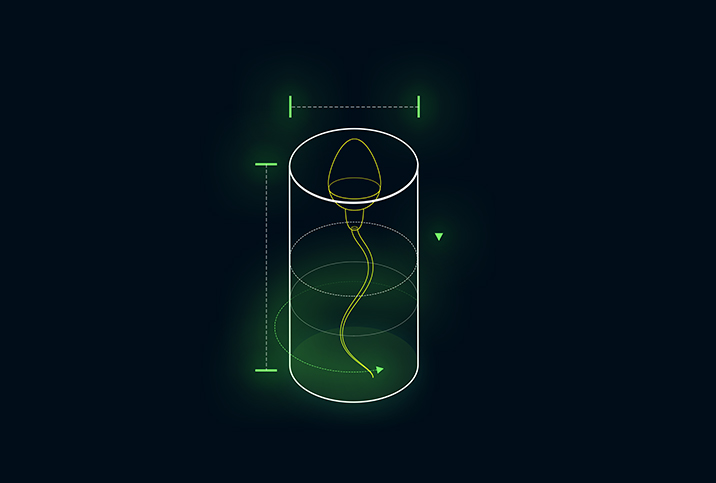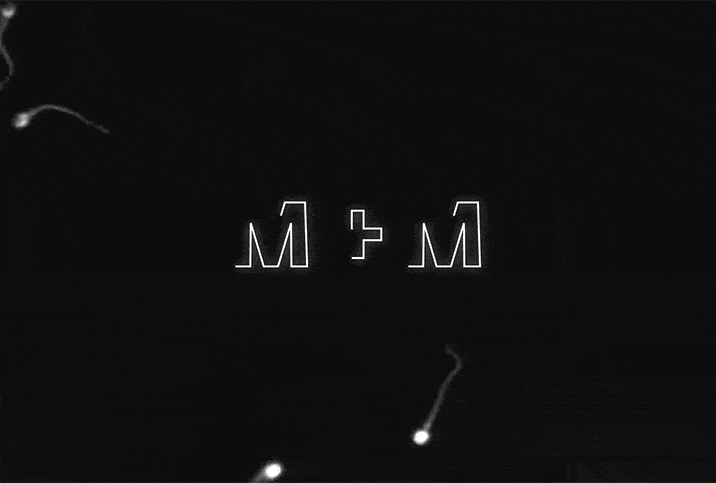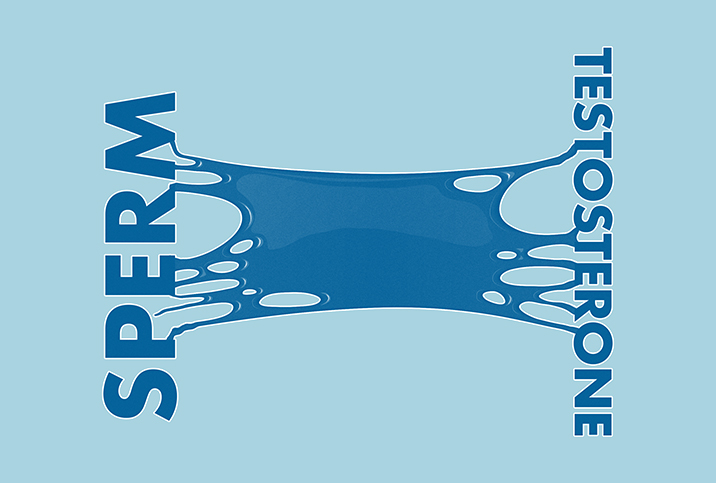What the Shape of Your Sperm Says About Your Fertility

Many factors can impact a person's ability to conceive. Some couples have no problems becoming pregnant, while others struggle.
One of the biggest reasons reproduction plans don't come to fruition in the 40 percent or more of cases attributed to male-factor infertility is the health, shape and size of the male partner's sperm. For a couple that has been trying to conceive for at least a year without success, sperm morphology might be to blame.
OK, good to know, but what is sperm morphology? It's a field of study where doctors in the reproductive field analyze sperm. The most common male fertility test is a semen analysis, which measures sperm count, shape and size. Specialists use microscopes to measure the amount of misshapen sperm.
The right and wrong sperm shape
Sperm need to have a proper shape, but those things are tiny. How do specialists determine their shape, and what parts are analyzed for abnormal shape or size?
"The head should be oval, with a cap or acrosome, that has enzymes that enable the sperm to penetrate the outer membrane of an egg," said Bobby Najari, M.D., the associate urology residency director at New York University School of Medicine, referring to the World Health Organization's manual of sperm morphology to describe the typical shape. "The midpiece should be slender and regular, and it contains the mitochondria that generate the energy for sperm movement. The tail should be uniform and about 10 times the length of the head. It provides movement for the sperm."
Healthy sperm provide peace of mind when you're considering fertility and growing a family.
Now, if healthy sperm have a good shape, then less-than-sufficient sperm must look like something else.
"Residual cytoplasm, a gel-like fluid filling a cell, can show as blebs [small blisters or bubbles] along with the head, midpiece and or tail," said Amin Herati, M.D., an assistant professor of urology at Johns Hopkins Medicine in Baltimore and a medical advisor at Ro Sperm Kit, adding that sperm shape can impact how they interact with eggs in vivo, or in the body.
He explained headpiece defects such as large, tapered or pin-shaped heads can indicate problems.
"These abnormalities can affect sperm motility and may imply disorders of DNA quality," Herati said, describing motility as a sperm's ability to move rapidly. In healthy sperm, 60 percent to 80 percent of them should move quickly.
Factors that impact the shape of sperm
All sorts of factors impact sperm shape and health. Hormones, infections and medications—really, most things that can influence your health—can also impact your sperm.
"Some of the factors that can affect the shape of sperm are heat and undescended testes," said Dan Kenigsberg M.D., of RMA Long Island IVF.
High temperatures can cause damage to the plasma and membranes in sperm. People with undescended testes have lower fertility rates because of a lack of germ cells, which is what carries the male's DNA for reproduction.
"An underlying condition and or identifiable lifestyle factor, such as heat exposure, occupational exposure, recreational drug use, can be identified in many patients that can explain the low morphology," Herati said.
But that's not all that can impact sperm shape.
"Other factors include cannabis exposure, polychlorinated biphenyls and varicocele, or swollen scrotal veins," Najari said.
Polychlorinated biphenyls, or PCBs, are a group of more than 200 chlorinated compounds found in old fluorescent lights and hydraulic oils. Some PCBs can exist as a vapor in air.
What you can do to improve sperm shape
Morphology is one of the four major aspects of sperm health which can impact fertility. While abnormal morphology may not impact someone's sex life, if a couple is looking to conceive, it can become a problem.
Even if your sperm are irregularly shaped, there's a lot you can do to improve sperm health.
Najari said diet changes can help promote healthy sperm morphology while recommending a diet rich in leafy greens and nuts, and low in heavily processed meats. White meat is better than red meat.
However, your best bet is to see a reproductive urologist.


















